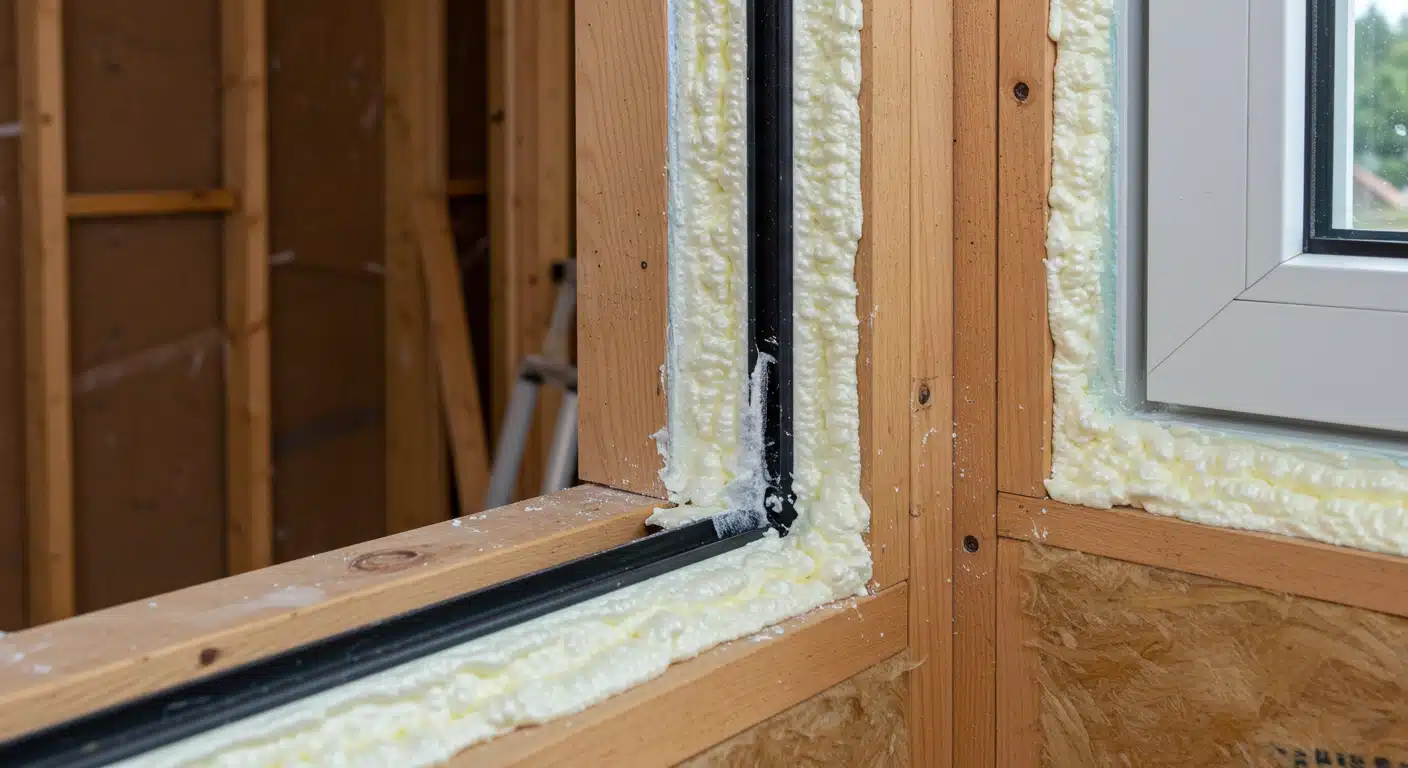Spray foam insulation has become a popular choice due to its excellent air-sealing properties and high R-values. However, like any product, it comes with some drawbacks. Before investing in spray foam, it’s essential to consider the potential disadvantages. Below, we discuss some common concerns—and how we can address or mitigate them.
1. Higher Upfront Cost
Why It Matters
- Materials and installation: Compared to traditional insulation types like fiberglass or cellulose, spray foam requires specialized equipment and professional application, making it more expensive upfront.
- Long-term benefits: While the higher cost is often offset by lower energy bills over time, the initial investment can be a hurdle for many homeowners.
How We Address It
- Get multiple quotes: Prices can vary widely. We always recommend comparing bids from qualified contractors to ensure the best balance of cost and expertise.
- Explore financing options: Some contractors and energy-efficiency programs offer financing plans to spread out the investment.
2. Potential for Off-Gassing
Why It Matters
- Chemical odors: During installation, spray foam can release fumes that may linger temporarily, causing discomfort for sensitive individuals.
- Health concerns: Proper ventilation is crucial during the curing process, as high concentrations of certain chemicals can irritate the eyes, nose, or throat.
How We Address It
- Hire trained professionals: Certified installers know how to apply spray foam safely and minimize fumes.
- Ensure proper ventilation: Good airflow during and after application helps disperse any lingering odors or chemicals.
3. Risk of Improper Installation
Why It Matters
- Inefficiency or damage: If not applied at the correct thickness or allowed to cure properly, insulation performance may suffer. In some cases, excessive expansion can even damage walls or roof sheathing.
- Moisture problems: Poorly installed foam may trap moisture against wood framing, leading to potential mold or rot issues.
How We Address It
- Work with experienced contractors: Choosing a company with a solid track record, such as Golden State Spray Foam Insulation in Fresno, CA, ensures flawless installation.
- Request references: Seeing past projects and confirming the installer follows local building codes helps ensure quality work.
4. Difficult to Remove or Modify
Why It Matters
- Future renovations: Once cured, spray foam is hard to remove. If access to wiring or plumbing behind the insulation is needed, it can be challenging to cut through and reseal without leaving gaps.
- Historic or older homes: In some cases, spray foam may alter a building’s structure or character in ways that are not easily reversible.
How We Address It
- Plan: Before installing spray foam, we ensure all wiring, plumbing, or remodeling plans in those areas are finalized.
- Consult specialists: For historic homes or structures with unique features, we recommend working with professionals who specialize in older properties.
5. Potential Code and Ventilation Requirements
Why It Matters
- Local building codes: Some regions have strict guidelines on insulation materials, vapor barriers, and ventilation systems. Non-compliance can lead to fines or costly retrofits.
- Ventilation needs: Spray foam creates a tight seal, which can sometimes require additional mechanical ventilation to maintain healthy indoor air quality.
How We Address It
- Stay up to date on regulations: We work with contractors who understand local building codes to ensure compliance.
- Install proper ventilation: Using energy recovery ventilators (ERVs) or heat recovery ventilators (HRVs) helps balance air quality and efficiency.
6. Sensitivity to Temperature During Installation
Why It Matters
- Cure times and adhesion: Spray foam must be applied in specific temperature and humidity ranges. Extreme conditions can affect how well the foam adheres and cures.
- Surface prep: If surfaces are damp or dirty, the foam may not adhere properly, leading to gaps or compromised insulation performance.
How We Address It
- Schedule carefully: We plan installations during suitable weather conditions to ensure optimal curing.
- Prepare surfaces properly: Before application, we make sure all surfaces are clean, dry, and free from debris.
Conclusion
Spray foam insulation can be a game-changer for energy efficiency, comfort, and even structural reinforcement
if installed correctly and in the right conditions. However, being aware of potential challenges, from cost to installation complexities, allows us to make informed decisions that best suit our homes.
If you’re in or around Fresno, CA, and need expert guidance to ensure a smooth and successful spray foam installation, reach out to Golden State Spray Foam Insulation. Our team has the experience and local knowledge to help maximize the benefits of spray foam—while minimizing the drawbacks.
Frequently Asked Questions
Is spray foam harmful to breathe during installation?
Yes, spray foam can release fumes during application and curing. If inhaled in high concentrations, these chemicals may irritate. Proper ventilation and professional installation help minimize health risks.
Will spray foam fix existing leaks or moisture problems?
No. Spray foam is an excellent air barrier, but it’s not a leak repair solution. Any plumbing or roof leaks should be addressed before installation to prevent moisture issues.
Can spray foam insulation be removed or modified later?
Once cured, spray foam is difficult to remove. We recommend planning for future wiring, plumbing, or renovations. If modifications are needed, professional help may be required.
How long should we stay away from the area after installation?
It’s typically recommended to wait 24–72 hours for the foam to cure and off-gas, depending on the product used and ventilation conditions. Your installer can provide specific guidance.
Do we need a vapor barrier with spray foam?
Closed-cell spray foam often acts as its vapor barrier due to its density. However, open-cell foam may require an additional vapor barrier, depending on climate and local codes.


